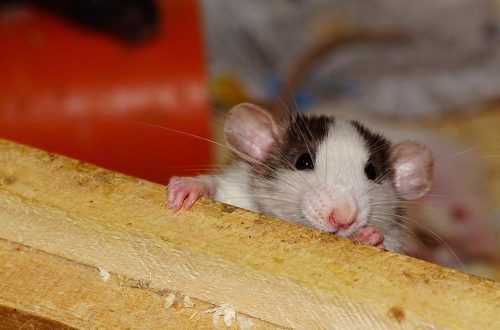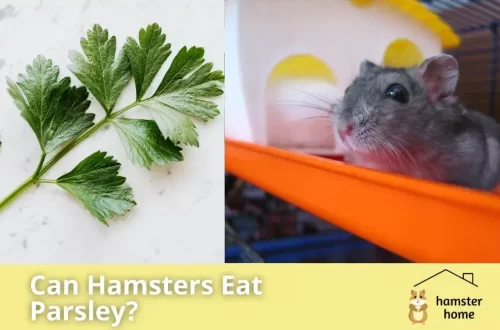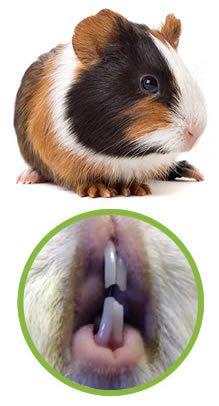
Guinea pig teeth
According to so many guinea pig owners, dental problems and the process of treating them is the biggest stumbling block in veterinary practice. Neglect of this topic is fraught with the most serious consequences, and the wrong treatment technique is a common cause of death in pigs.
Guinea pigs have 20 teeth: a pair of upper and lower incisors, no canine teeth (instead, a gap called a diastema), a pair of upper and lower premolars, and three pairs of upper and lower molars. These open-rooted teeth grow continuously. The teeth of a healthy guinea pig will vary in length: the lower teeth should be 1,5 times as long as the equivalent teeth in the upper jaw.
Tooth enamel is white, like most mammals.
In the photo of the guinea pig skull below, it is noticeable that the guinea pig does not have four teeth at all, as many people think.
According to so many guinea pig owners, dental problems and the process of treating them is the biggest stumbling block in veterinary practice. Neglect of this topic is fraught with the most serious consequences, and the wrong treatment technique is a common cause of death in pigs.
Guinea pigs have 20 teeth: a pair of upper and lower incisors, no canine teeth (instead, a gap called a diastema), a pair of upper and lower premolars, and three pairs of upper and lower molars. These open-rooted teeth grow continuously. The teeth of a healthy guinea pig will vary in length: the lower teeth should be 1,5 times as long as the equivalent teeth in the upper jaw.
Tooth enamel is white, like most mammals.
In the photo of the guinea pig skull below, it is noticeable that the guinea pig does not have four teeth at all, as many people think.

As you can see, guinea pigs have very long incisors. The upper and lower incisors can be up to 1,5 centimeters long. The upper and lower incisors should match in length.
In a healthy guinea pig, the process of biting, chewing and chewing food (especially hay, grass and other roughage) usually keeps the length of the teeth normal – it varies, and it is different for each pig. If your guinea pig eats well, her teeth will naturally wear down as they should.
Healthy guinea pigs do NOT need to grind their front teeth.
The back teeth of guinea pigs (molars) are much more difficult to examine. They are located deep in the mouth, which is often full of food, making inspection difficult and requiring the help of a veterinarian and special tools.
Healthy teeth in guinea pigs are the key to their health, so it is important to know what problems can await guinea pigs and their teeth in order to notice the problem in time. The following list of dental diseases will guide you through everything you need to know to keep your guinea pig’s teeth healthy.
As you can see, guinea pigs have very long incisors. The upper and lower incisors can be up to 1,5 centimeters long. The upper and lower incisors should match in length.
In a healthy guinea pig, the process of biting, chewing and chewing food (especially hay, grass and other roughage) usually keeps the length of the teeth normal – it varies, and it is different for each pig. If your guinea pig eats well, her teeth will naturally wear down as they should.
Healthy guinea pigs do NOT need to grind their front teeth.
The back teeth of guinea pigs (molars) are much more difficult to examine. They are located deep in the mouth, which is often full of food, making inspection difficult and requiring the help of a veterinarian and special tools.
Healthy teeth in guinea pigs are the key to their health, so it is important to know what problems can await guinea pigs and their teeth in order to notice the problem in time. The following list of dental diseases will guide you through everything you need to know to keep your guinea pig’s teeth healthy.
Contents
- Malocclusion in guinea pigs
- Symptoms of malocclusion in guinea pigs:
- Symptoms of malocclusion in guinea pigs:
- Signs of an incipient malocclusion in a guinea pig:
- Diagnosis of malocclusion in a guinea pig
- Signs of an incipient malocclusion in a guinea pig:
- Diagnosis of malocclusion in a guinea pig
- Treatment of malocclusion in guinea pigs
- Treatment of malocclusion in guinea pigs
- Elongated tooth roots in guinea pigs
- Guinea pig has a broken tooth
- Guinea pig lost a tooth
- Different teeth in a guinea pig
Malocclusion in guinea pigs
Malocclusion (malocclusion) is a common disease in guinea pigs.
Teeth that have an incorrect bite, as a rule, are poorly ground or very long. Often, overgrowth of the anterior and posterior teeth is observed simultaneously, although sometimes only the anterior teeth grow strongly. If the pig does not receive proper nutrition, the front teeth begin to grind poorly. Usually, the lower molars begin to grow forward and sometimes grow into the tongue, while the upper molars grow towards the cheeks. Teeth that are too long interfere with the normal chewing of food and may cause injury to the oral cavity.
Malocclusion (malocclusion) is a common disease in guinea pigs.
Teeth that have an incorrect bite, as a rule, are poorly ground or very long. Often, overgrowth of the anterior and posterior teeth is observed simultaneously, although sometimes only the anterior teeth grow strongly. If the pig does not receive proper nutrition, the front teeth begin to grind poorly. Usually, the lower molars begin to grow forward and sometimes grow into the tongue, while the upper molars grow towards the cheeks. Teeth that are too long interfere with the normal chewing of food and may cause injury to the oral cavity.
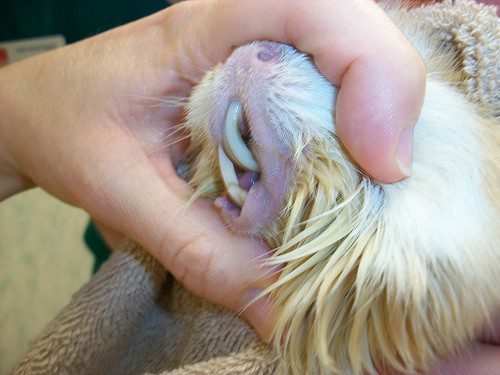
Sometimes malocclusion is due to genetic inheritance, especially when the condition occurs in gilts under two years of age. Trauma or infection can affect the teeth, causing malocclusion. Conditions associated with a violation of the diet (reduction in volume, the presence of only juicy and soft food) contribute to the growth of teeth and, as a result, lead to malocclusion.
Symptoms of malocclusion in guinea pigs:
- the pig hardly eats food, choosing only small pieces or refuses to eat at all
- slightly open mouth
- weight loss. As a rule, when the owners notice that something has happened to the pig, the animal has already lost a significant part of the weight and becomes what is called “skin and bones”.
- salivation. As soon as the mouth no longer closes completely (due to heavily ingrown teeth), the hair on the chin becomes wet.
The very first precaution an owner can take is to weigh their gilt weekly. It is very important to notice the first stage of the disease in time, when the pig begins to lose weight, in order to stop it.
Sometimes malocclusion is due to genetic inheritance, especially when the condition occurs in gilts under two years of age. Trauma or infection can affect the teeth, causing malocclusion. Conditions associated with a violation of the diet (reduction in volume, the presence of only juicy and soft food) contribute to the growth of teeth and, as a result, lead to malocclusion.
Symptoms of malocclusion in guinea pigs:
- the pig hardly eats food, choosing only small pieces or refuses to eat at all
- slightly open mouth
- weight loss. As a rule, when the owners notice that something has happened to the pig, the animal has already lost a significant part of the weight and becomes what is called “skin and bones”.
- salivation. As soon as the mouth no longer closes completely (due to heavily ingrown teeth), the hair on the chin becomes wet.
The very first precaution an owner can take is to weigh their gilt weekly. It is very important to notice the first stage of the disease in time, when the pig begins to lose weight, in order to stop it.
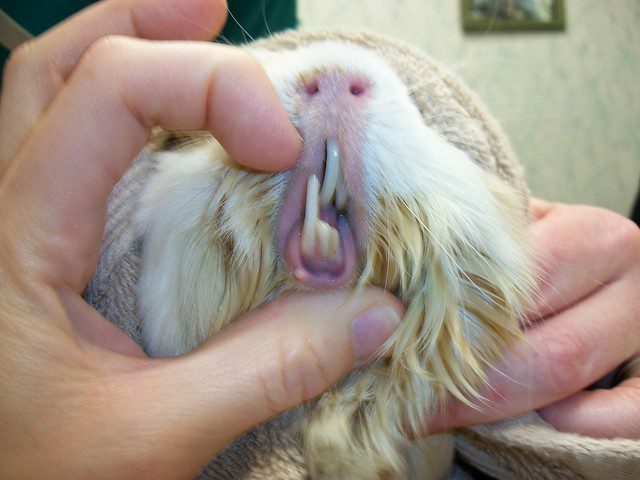
Signs of an incipient malocclusion in a guinea pig:
Answer the questions:
- Does it seem to you that the pig is chewing as if it has taken something in its mouth and is trying to spit it out?
- Do you notice that your ears move too much while chewing food?
- Is there discharge from the nose or eyes (may indicate an abscess)?
- Don’t you think that the pig only chews on one side?
- Are front teeth protruding?
- Does the guinea pig eat at the same rate as the others? (If there are several pigs)
- Can a pig bite or tear off pieces of food?
- Can a pig eat the skin of an apple as easily as the apple itself?
- Does the guinea pig chew (especially carrots) or does it have unchewed pieces falling out of its mouth?
- Does the guinea pig take pellets in her mouth and spit them back out?
- Does the guinea pig show great interest in food but not touch it?
- Does the pig gradually lose weight?
- Is there salivation?
Diagnosis of malocclusion in a guinea pig
To establish an accurate diagnosis, it is necessary to contact a veterinarian who practices dental treatment in pigs. Often, it is difficult to establish an accurate diagnosis and gilts receive the wrong treatment.
Weight loss is often indicative of scurvy due to not eating enough. Some veterinarians treat scurvy but forget about the root cause, malocclusion.
Very often, veterinarians grind only incisors and forget about excessively long molars, which create problems. Not all veterinarians have the experience, skill, and just the right tools to diagnose malocclusions or identify any other dental problems in a timely manner.
Signs of an incipient malocclusion in a guinea pig:
Answer the questions:
- Does it seem to you that the pig is chewing as if it has taken something in its mouth and is trying to spit it out?
- Do you notice that your ears move too much while chewing food?
- Is there discharge from the nose or eyes (may indicate an abscess)?
- Don’t you think that the pig only chews on one side?
- Are front teeth protruding?
- Does the guinea pig eat at the same rate as the others? (If there are several pigs)
- Can a pig bite or tear off pieces of food?
- Can a pig eat the skin of an apple as easily as the apple itself?
- Does the guinea pig chew (especially carrots) or does it have unchewed pieces falling out of its mouth?
- Does the guinea pig take pellets in her mouth and spit them back out?
- Does the guinea pig show great interest in food but not touch it?
- Does the pig gradually lose weight?
- Is there salivation?
Diagnosis of malocclusion in a guinea pig
To establish an accurate diagnosis, it is necessary to contact a veterinarian who practices dental treatment in pigs. Often, it is difficult to establish an accurate diagnosis and gilts receive the wrong treatment.
Weight loss is often indicative of scurvy due to not eating enough. Some veterinarians treat scurvy but forget about the root cause, malocclusion.
Very often, veterinarians grind only incisors and forget about excessively long molars, which create problems. Not all veterinarians have the experience, skill, and just the right tools to diagnose malocclusions or identify any other dental problems in a timely manner.
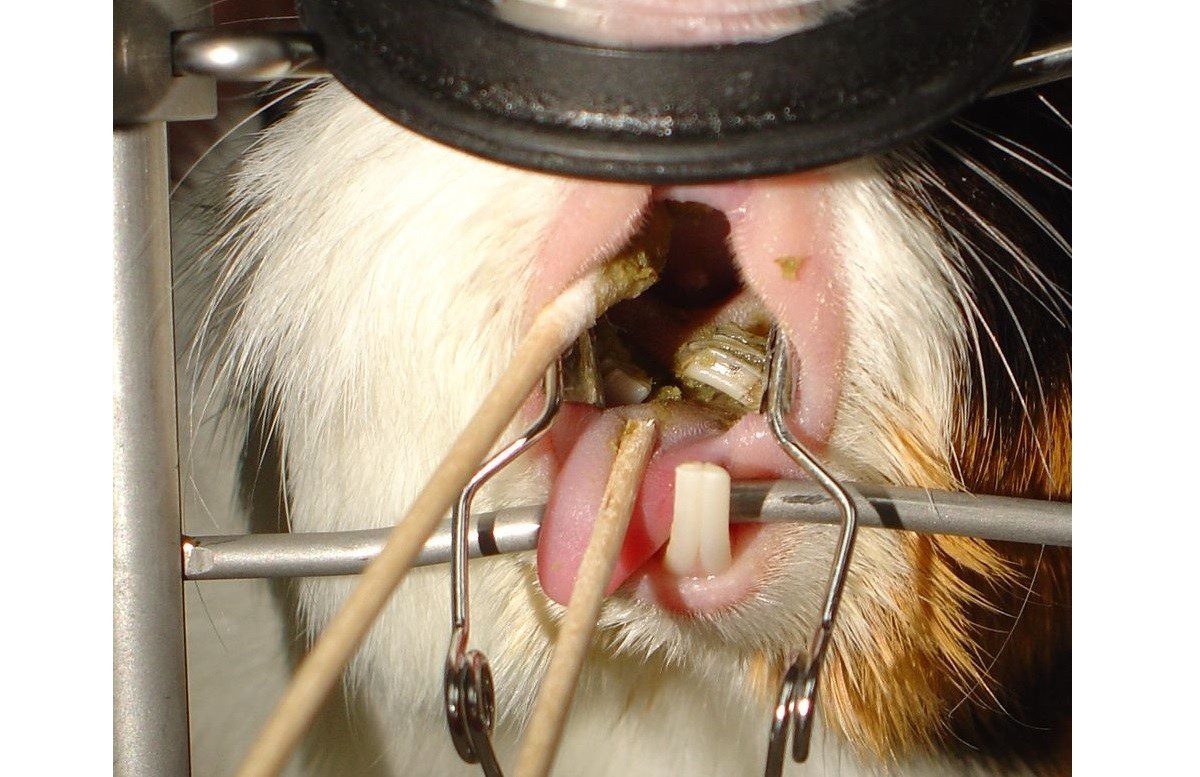
Direct examination of the oral cavity is performed quite often under general anesthesia, although the initial examination can be done without anesthesia. The doctor, with the help of an assistant who will gently hold the mumps (one hand on the sacrum and the other on the cervico-shoulder region). A buccal pad separator may be helpful in examining the oral cavity.
Pay attention to the following details:
- Has the veterinarian used a cheek separator?
- Did the vet take an x-ray to look for signs of an abscess?
- Did the vet feel the outside of the jaw for hooks?
Treatment of malocclusion in guinea pigs
Improperly growing molars are ground and polished (usually under anesthesia). The front teeth may be chipped or undercut. There is a risk of splitting or damage to the tooth during trimming. In some cases, the cavy’s teeth need to be adjusted every few weeks.
Direct examination of the oral cavity is performed quite often under general anesthesia, although the initial examination can be done without anesthesia. The doctor, with the help of an assistant who will gently hold the mumps (one hand on the sacrum and the other on the cervico-shoulder region). A buccal pad separator may be helpful in examining the oral cavity.
Pay attention to the following details:
- Has the veterinarian used a cheek separator?
- Did the vet take an x-ray to look for signs of an abscess?
- Did the vet feel the outside of the jaw for hooks?
Treatment of malocclusion in guinea pigs
Improperly growing molars are ground and polished (usually under anesthesia). The front teeth may be chipped or undercut. There is a risk of splitting or damage to the tooth during trimming. In some cases, the cavy’s teeth need to be adjusted every few weeks.
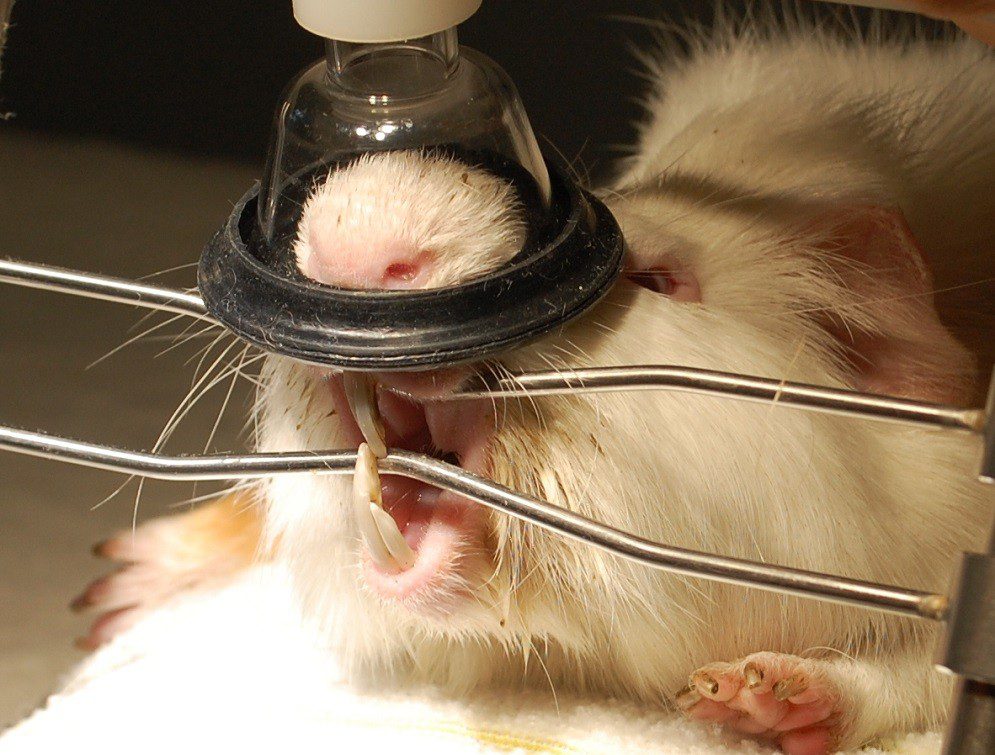
Many veterinarians prefer to use anesthesia during these procedures.
The biggest problem of all is the use of anesthesia in guinea pigs, which allows the veterinarian to perform the necessary manipulations. Although it is well known that there are no nerves in the teeth, very often doctors insist on anesthesia in order for the work to be done very carefully and accurately. At the same time, veterinarians are aware that anesthesia is a big health risk for a pig, even if it is perfectly healthy. Doing anesthesia to an exhausted or starving pig for some time is a sure recipe for death!
Arguments against working with an animal without anesthesia are that the animal is subjected to too much stress.
THERE IS NO OBJECTIVE REASON FOR ANESTHETIATING A PIG TO CUT HER PREMOLARS OR MOLAR. TO USE HER IS TO EXPOSE HER LIFE TO A GREAT RISK FOR NO REASON!
Many veterinarians prefer to use anesthesia during these procedures.
The biggest problem of all is the use of anesthesia in guinea pigs, which allows the veterinarian to perform the necessary manipulations. Although it is well known that there are no nerves in the teeth, very often doctors insist on anesthesia in order for the work to be done very carefully and accurately. At the same time, veterinarians are aware that anesthesia is a big health risk for a pig, even if it is perfectly healthy. Doing anesthesia to an exhausted or starving pig for some time is a sure recipe for death!
Arguments against working with an animal without anesthesia are that the animal is subjected to too much stress.
THERE IS NO OBJECTIVE REASON FOR ANESTHETIATING A PIG TO CUT HER PREMOLARS OR MOLAR. TO USE HER IS TO EXPOSE HER LIFE TO A GREAT RISK FOR NO REASON!
Elongated tooth roots in guinea pigs
Like rabbits, guinea pig teeth grow throughout life. Sometimes the roots of a guinea pig’s teeth begin to elongate or grow into the jaw.
Examination of the oral cavity may not give any results and may not detect the disease. However, the lower teeth can sometimes feel uneven along the lower jawline. Another symptom of lengthening the roots of the teeth is unnaturally protruding eyes in the pig.
In order to establish an accurate diagnosis associated with root elongation, the most reliable way is an x-ray, which will help to make an accurate diagnosis.
Like rabbits, guinea pig teeth grow throughout life. Sometimes the roots of a guinea pig’s teeth begin to elongate or grow into the jaw.
Examination of the oral cavity may not give any results and may not detect the disease. However, the lower teeth can sometimes feel uneven along the lower jawline. Another symptom of lengthening the roots of the teeth is unnaturally protruding eyes in the pig.
In order to establish an accurate diagnosis associated with root elongation, the most reliable way is an x-ray, which will help to make an accurate diagnosis.
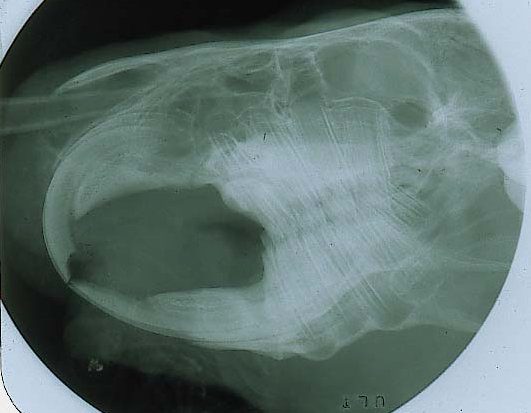
After the X-ray, treatment is prescribed. For guinea pigs that are in the early stages of the disease, a jaw ligation (sling) is commonly used. Chin sling is a revolutionary new way to treat an overbite caused by temporomandibular joint syndrome without invasive dental work. This method has shown its high efficiency.
The essence of the method is the imposition of an elastic bandage for the jaw, which supports the jaw in the desired position, so that the upper and lower back teeth close to each other. The increased pressure and resistance allows the teeth to rub against each other and helps the gilt regain strength in the jaw muscles, which will save him from future tooth grinding. This treatment is also effective after initial grinding of overgrown molars. Jaw ligation supports the jaw while promoting normal tooth wear.
After the X-ray, treatment is prescribed. For guinea pigs that are in the early stages of the disease, a jaw ligation (sling) is commonly used. Chin sling is a revolutionary new way to treat an overbite caused by temporomandibular joint syndrome without invasive dental work. This method has shown its high efficiency.
The essence of the method is the imposition of an elastic bandage for the jaw, which supports the jaw in the desired position, so that the upper and lower back teeth close to each other. The increased pressure and resistance allows the teeth to rub against each other and helps the gilt regain strength in the jaw muscles, which will save him from future tooth grinding. This treatment is also effective after initial grinding of overgrown molars. Jaw ligation supports the jaw while promoting normal tooth wear.
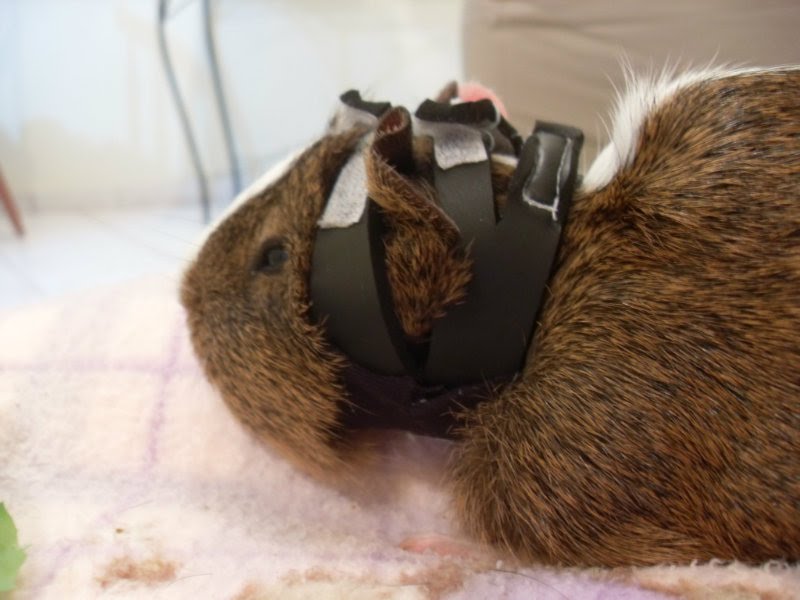
Guinea pig has a broken tooth
The most common causes of broken teeth in guinea pigs are:
- Injuries or falls
- Lack of vitamin C (increases the chance of tooth decay, as vitamin C is needed for normal growth of bones and teeth).
So, the guinea pig has a broken tooth. Unfortunately. What to do and how to behave?
Make sure that the remaining teeth are not so long as to damage the opposite gum or the skin in the mouth. If the tooth is broken very badly, there is a hole in the gum and it bleeds, periodically wash the wound from food debris with saline (a teaspoon of ordinary table salt dissolved in 0,5 liters of warm water) using a small syringe. If the tooth fragment is uneven or the tooth on the opposite side damages the oral cavity (this is possible if the entire tooth and root have been lost), it is best to contact your veterinarian. An experienced veterinarian can trim an uneven chip or trim the teeth if they start to grow out of alignment.
Make sure your pig can eat. You may need to cut the food into small pieces or feed by hand. If your guinea pig is unable to use a bottle drinker, offer her a liquid in a sponge or juicy vegetables so she can get enough moisture.
The most common causes of broken teeth in guinea pigs are:
- Injuries or falls
- Lack of vitamin C (increases the chance of tooth decay, as vitamin C is needed for normal growth of bones and teeth).
So, the guinea pig has a broken tooth. Unfortunately. What to do and how to behave?
Make sure that the remaining teeth are not so long as to damage the opposite gum or the skin in the mouth. If the tooth is broken very badly, there is a hole in the gum and it bleeds, periodically wash the wound from food debris with saline (a teaspoon of ordinary table salt dissolved in 0,5 liters of warm water) using a small syringe. If the tooth fragment is uneven or the tooth on the opposite side damages the oral cavity (this is possible if the entire tooth and root have been lost), it is best to contact your veterinarian. An experienced veterinarian can trim an uneven chip or trim the teeth if they start to grow out of alignment.
Make sure your pig can eat. You may need to cut the food into small pieces or feed by hand. If your guinea pig is unable to use a bottle drinker, offer her a liquid in a sponge or juicy vegetables so she can get enough moisture.
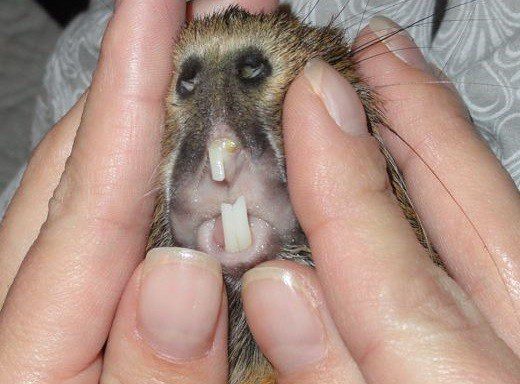
- If there is no apparent reason for the tooth to break (the pig did not fall, did not gnaw on the cage, etc.), then the problem is most likely a lack of vitamin C. Make sure the pig gets enough of this vitamin. Vitamin C stimulates the growth of bones, strong healthy teeth and speeds up the healing process. Read more about dosages and how to give guinea pigs vitamin C in the article “Vitamin C for guinea pigs”
For gilts with normal healthy teeth, trimming and leveling teeth if one is broken is not required, and in fact, may delay recovery and return to the ability to bite and chew food. Little by little, the broken tooth will grow back and will soon join the rest. When the teeth close, they will be polished and the bite will be correct again. The only reason to worry is if the tooth opposite the broken one is scratching the gum. This can happen if the tooth is broken almost to the base or falls out completely, exposing the gum. If a piece of tooth is visible, then there is nothing to do but give the pig heavily crushed food and watch closely.
Guinea pigs with extracted, broken and fallen teeth are surprisingly quick to adapt to eat. They draw food into their mouths by manipulating their tongues. If the pig has no upper or lower incisors left, it is recommended to feed it with ground food.
If only one of the upper or lower incisors is broken, and the second remains intact, the pig can easily eat, as she did before. However, check after a week to see if the new tooth has started growing.
- If there is no apparent reason for the tooth to break (the pig did not fall, did not gnaw on the cage, etc.), then the problem is most likely a lack of vitamin C. Make sure the pig gets enough of this vitamin. Vitamin C stimulates the growth of bones, strong healthy teeth and speeds up the healing process. Read more about dosages and how to give guinea pigs vitamin C in the article “Vitamin C for guinea pigs”
For gilts with normal healthy teeth, trimming and leveling teeth if one is broken is not required, and in fact, may delay recovery and return to the ability to bite and chew food. Little by little, the broken tooth will grow back and will soon join the rest. When the teeth close, they will be polished and the bite will be correct again. The only reason to worry is if the tooth opposite the broken one is scratching the gum. This can happen if the tooth is broken almost to the base or falls out completely, exposing the gum. If a piece of tooth is visible, then there is nothing to do but give the pig heavily crushed food and watch closely.
Guinea pigs with extracted, broken and fallen teeth are surprisingly quick to adapt to eat. They draw food into their mouths by manipulating their tongues. If the pig has no upper or lower incisors left, it is recommended to feed it with ground food.
If only one of the upper or lower incisors is broken, and the second remains intact, the pig can easily eat, as she did before. However, check after a week to see if the new tooth has started growing.
Guinea pig lost a tooth
Contrary to popular belief, a missing tooth or teeth pose no threat to a guinea pig. The pig will not die of hunger, as they say on the forums.
Healthy pigs will definitely grow new teeth! This usually happens within two to three weeks.
Many breeders are not even aware that their pets have lost a tooth or teeth exactly until they notice that the pig does not eat anything. Therefore, if you notice strange and atypical behavior in your pig and a full feeder, coupled with hungry eyes, the first thing to do is check for incisors. If one or a couple is not available, be prepared to feed your pig like a baby for several weeks with mashed potatoes and porridge-like food (a blender will help you!)
But after a couple of weeks, new, stronger teeth will grow back, and will delight both you and the pig.
However, some problems may arise. New teeth may begin to grow in a different direction, interfering with other teeth, which can be uncomfortable for the guinea pig.
Contrary to popular belief, a missing tooth or teeth pose no threat to a guinea pig. The pig will not die of hunger, as they say on the forums.
Healthy pigs will definitely grow new teeth! This usually happens within two to three weeks.
Many breeders are not even aware that their pets have lost a tooth or teeth exactly until they notice that the pig does not eat anything. Therefore, if you notice strange and atypical behavior in your pig and a full feeder, coupled with hungry eyes, the first thing to do is check for incisors. If one or a couple is not available, be prepared to feed your pig like a baby for several weeks with mashed potatoes and porridge-like food (a blender will help you!)
But after a couple of weeks, new, stronger teeth will grow back, and will delight both you and the pig.
However, some problems may arise. New teeth may begin to grow in a different direction, interfering with other teeth, which can be uncomfortable for the guinea pig.
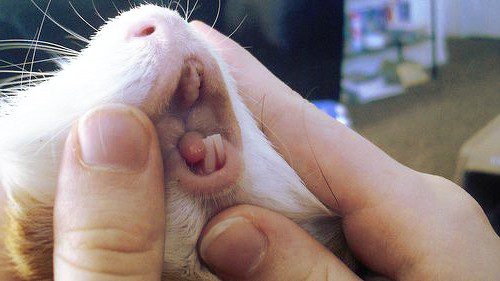
Different teeth in a guinea pig
Quite rarely, but sometimes it happens that a guinea pig has incisors of different lengths, despite the fact that the bite does not suffer at all. Such cases amaze even experienced veterinarians, which can lead to misdiagnosis. The doctor will argue that the teeth are excessively long, but in fact this is just an individual feature of this pig.
The rule says: if the pig does not lose weight, then she does not have problems with her teeth!
Quite rarely, but sometimes it happens that a guinea pig has incisors of different lengths, despite the fact that the bite does not suffer at all. Such cases amaze even experienced veterinarians, which can lead to misdiagnosis. The doctor will argue that the teeth are excessively long, but in fact this is just an individual feature of this pig.
The rule says: if the pig does not lose weight, then she does not have problems with her teeth!




